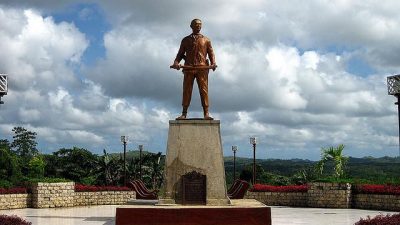By Patricia Lanzagarita
MANILA — The Philippines is continuously unique for being the only country that starts the celebration of Christmas when the calendar enters the “BER” months.
Moreover, in the country where Christmas is significantly commemorated, the Philippines has many traditions that you can only see in the country.
Hanging of Parols
Aside from hanging Christmas lights, Filipinos also hang parols or lanterns in their homes.
Parols have always been one of the Christmas ornaments that Filipinos buy to hang in their homes and even on the streets.
It comes in various sizes and shapes, but usually, you can find one in the shape of a circle with a star inside of it.
Filipinos tend to showcase their parols by using recycled materials, such as plastic bottles, wire, wood, paper, and more.
Parols are unique in the Philippines, causing Filipinos to host various contests in parol-making.
Simbang Gabi
Simbang Gabi, or ‘night mass’ in English, is one of the Philippines’ customs that many Filipinos have followed until now, especially the younger generation.
Filipinos attend mass late at night or early in the morning for nine (9) days straight until Christmas Eve.
People try to complete it for their own religious beliefs, but some are completing it because Filipinos believe that if you complete the nine-day mass, it will allow you to make a wish and it will be granted.
Adding extra happiness to this custom are the foods that you can buy during the Christmas season, including bibingka and puto bumbong.
The Culture of Aguinaldo and Pamasko
In the Philippines, when parents christened their babies, they chose their closest friends or families to be the Ninangs and Ninongs, or godparents, of their children. At this time of the year, kids receive gifts and money from their godparents.
Usually, pamasko comes in the form of actual gifts, but some are in the form of red ang pao, which is named aguinaldo and contains money such as P20, P100, and other amounts.
Indeed, Christmas in the country is celebrated differently. These are just a few examples of the unique traditions of the Philippines.
Most importantly, now is the time to give, be grateful, and enjoy the holidays with your family.
(ai/mnm)







